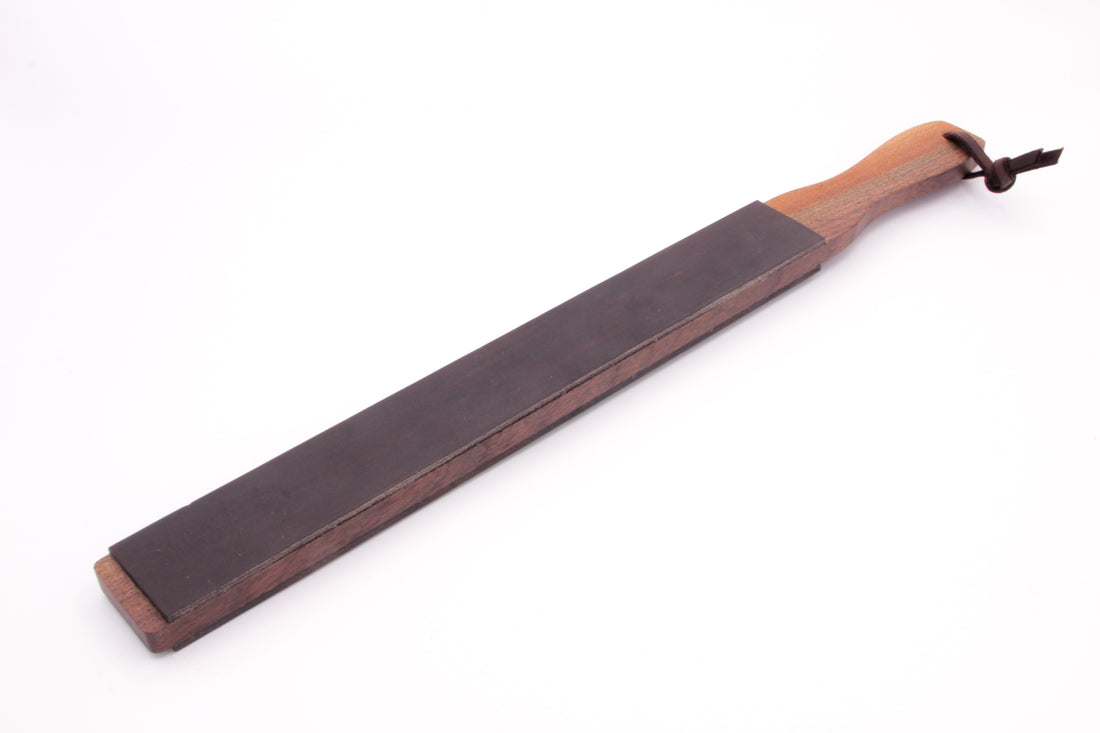
Use & Care For Your New Knife
Share
1. Keep your knives clean and dry in between use.
2. Use a wood cutting board (End Grain recommended) or plastic boards. Avoid Glass or other hard surfaces as a cutting board.
3. Use one of my leather strops to keep your edges nice and straight. I'll strop my knives before every use. This will maximize the length of a sharp edge between taking it back to sharpening stones.
4. Maximizing the blade's edge holding time will depend greatly through numerous factors that range from the way you hold your knife, the type of cutting board you use and the way you store your knives.
5. Condition your knife's handle every few weeks. I provide a jar of Knife Handle and Cutting Board Conditioner of which you only need to apply a small amount and let dry completely for 10-15 minutes; after which you simply gently buff the surface and it's ready for service.
The Best Cutting Board
There are many options from wood to rubber and plastic cutting boards. Each one has it's pros and cons.
Wood Cutting Boards - There are different types of wood cutting boards: Side grain, End grain and many wood species that can be used. Hard maple or walnut are my favorites as end grain boards due to their medium hardness and self-healing properties when used in end grain cutting boards.
- End Grain cutting boards are 'self-healing' as the grain of the wood is directed upwards and will close itself back in after use naturally. These types of boards are also known as a butcher's block, are a bit more expensive, but will last a life time if properly cared for.
- Side Grain cutting boards are a more cost effective alternative, will still provide a great cutting surface but will wear and tear faster then a end grain board.
Wood cutting board maintenance is easily done by hydrating the wood using mineral oil for the cutting surface and/or beeswax for the sides.
Rubber cutting boards - These are relatively new cutting boards that have a special rubber top on the board that will extend the life of your knife's cutting edge.
Plastic cutting boards - while being easy to clean and store, they are the harshest on your blade's edge. They also have a tendency to haveallow small slices and chips that will end up in your food.
- Use when taking apart poultry, meats, fish and crustaceans.
- Pushing or slicing the blade against the plastic surface will chip it and will damage both your knife's edge and the board. These plastic chips can/will end up in your food!
Storage
High Carbon steel will rust if you leave it wet, or sitting for a long period without use. After you're finished using your knife, clean it with mild soap with the soft sponge (using the Scotch bright side will scratch the blade's finish) and dry off with a clean kitchen towel.
Keeping your blades in a knife block to keep your tips and edges away from damage. There are many options to storing your knives ranging from wall mounted magnetic wood strips to wood blocks and drawer liners.
- Keep your blades clean and dry!
- Use a knife block to keep your blade's tips & edges safe
- Wipe your knives with mineral oil when storing them for longer than a few days

